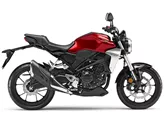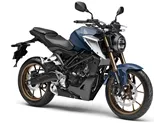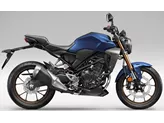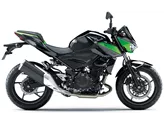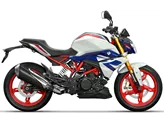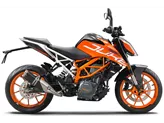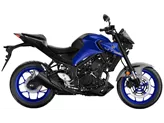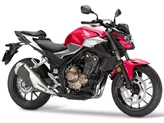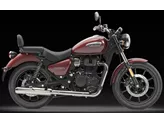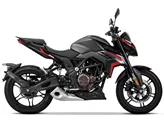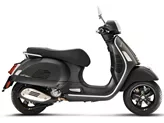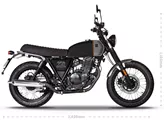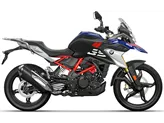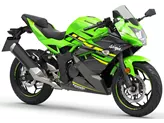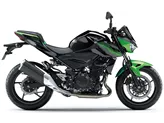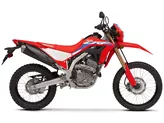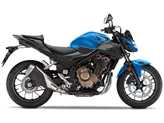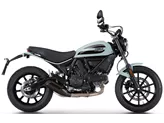Honda CB300R 2019 vs. Kawasaki Z 300 2016

Honda CB300R 2019

Kawasaki Z 300 2016
Overview - Honda CB300R 2019 vs Kawasaki Z 300 2016
When comparing the Honda CB300R 2019 and the Kawasaki Z 300 2016, several factors come into play.
Starting with the technical specifications, the Honda CB300R 2019 has an engine power of 31 HP, while the Kawasaki Z 300 2016 boasts a higher engine power of 39 HP. However, the Honda CB300R 2019 has a slightly higher torque of 27.5 Nm compared to the Kawasaki Z 300 2016's torque of 27 Nm. The Honda CB300R 2019 has a single cylinder engine, whereas the Kawasaki Z 300 2016 has a twin-cylinder engine. Both bikes have liquid cooling systems and similar displacements, with the Honda CB300R 2019 at 286 ccm and the Kawasaki Z 300 2016 at 296 ccm.

Honda CB300R 2019
In terms of the chassis, both bikes feature a steel frame, ensuring stability and durability. The Honda CB300R 2019 has four-piston radial brakes at the front, while the Kawasaki Z 300 2016 has double piston petal brakes at the front. Both bikes have a front tyre width of 110 mm and a front tyre diameter of 17 inches. The Honda CB300R 2019 has a rear tyre width of 150 mm and a rear tyre diameter of 17 inches, while the Kawasaki Z 300 2016 has a rear tyre width of 140 mm and a rear tyre diameter of 17 inches. The wheelbase of the Honda CB300R 2019 is 1352 mm, whereas the Kawasaki Z 300 2016 has a slightly longer wheelbase of 1405 mm. The seat height of the Honda CB300R 2019 is 799 mm, while the Kawasaki Z 300 2016 has a slightly lower seat height of 785 mm. The kerb weight of the Honda CB300R 2019 with ABS is 143 kg, whereas the Kawasaki Z 300 2016 has a higher kerb weight of 170 kg. Additionally, the fuel tank capacity of the Honda CB300R 2019 is 10 liters, while the Kawasaki Z 300 2016 has a larger fuel tank capacity of 17 liters.
Moving on to the strengths of each bike, the Honda CB300R 2019 offers super smooth handling, with a chassis that strikes a good balance between sportiness and comfort. The build quality of the Honda CB300R 2019 is also considered a notch better than its 125 counterpart. Furthermore, the Honda CB300R 2019 features LED lighting and IMU-ABS, enhancing safety and visibility.
On the other hand, the Kawasaki Z 300 2016 boasts an adult look and a high-quality finish. It offers a high-revving engine and a comfortable seating position. The brake system is stable, and the cockpit is easy to read and complete. Additionally, the Kawasaki Z 300 2016 has a low fuel consumption, making it an economical choice.

Kawasaki Z 300 2016
However, both bikes have their weaknesses. The Honda CB300R 2019 is unfortunately less equipped than its competition, and some riders may desire a little more horsepower from its 300 cc engine. On the other hand, the Kawasaki Z 300 2016 has a very unobtrusive sound, and the engine only starts when idling, which may not be ideal for some riders.
In conclusion, the Honda CB300R 2019 and the Kawasaki Z 300 2016 have their own strengths and weaknesses. It ultimately comes down to personal preferences and priorities when choosing between these two naked bikes.
Technical Specifications Honda CB300R 2019 compared to Kawasaki Z 300 2016
Pros and Cons in comparison
Pros and Cons in comparison
Honda CB300R 2019

With 300cc and 31 hp, the CB300R clearly belongs in the category of the more exotic representatives among the naked bikes. It may not be the most powerful bike in its class, but it is by far one of the handiest of its kind. The CB300R has extremely smooth turn-in behaviour that is almost on a par with the 125. However, the bike can score points with a more powerful engine and better chassis. The retro look of the 300 version is even better than that of its little sister and, for us, represents a real enrichment for the A2 segment.
Kawasaki Z 300 2016

The cool design of the Kawasaki Z300, which is extremely similar to that of its big sister Z800, makes it a very grown-up-looking motorbike. The stable braking system and the easy-to-read cockpit with an analogue rev counter and all the necessary features fit in very well with this image. Thanks to the 170 kg ready-to-ride weight, the bike is extremely easy to handle and playful. The engine only reveals its potential in the upper rev range, but revs up willingly and makes you want to ride in a sporty manner. Only the comfort-oriented chassis cannot quite cope with radically sporty demands - but this is quite legitimate and understandable for an entry-level motorbike.
Price Comparison Avarage Market Price Honda CB300R vs Kawasaki Z 300
There are a few key differences between a Honda CB300R 2019 and a Kawasaki Z 300 2016. It takes less time to sell a Kawasaki Z 300 with 88 days compared to 110 days for the Honda CB300R. Since model year 2018 1000PS.de editors have written 6 reviews for the Honda CB300R and 5 reviews for the Kawasaki Z 300 since model year 2015. The first review for the Honda CB300R was published on 11/6/2017 and now has more than 36,500 views. This compares to more than 59,800 views for the first review on Kawasaki Z 300 published on 11/4/2014.


